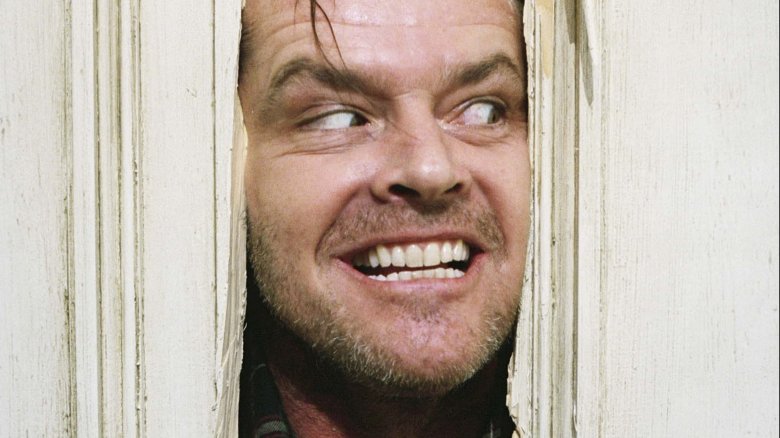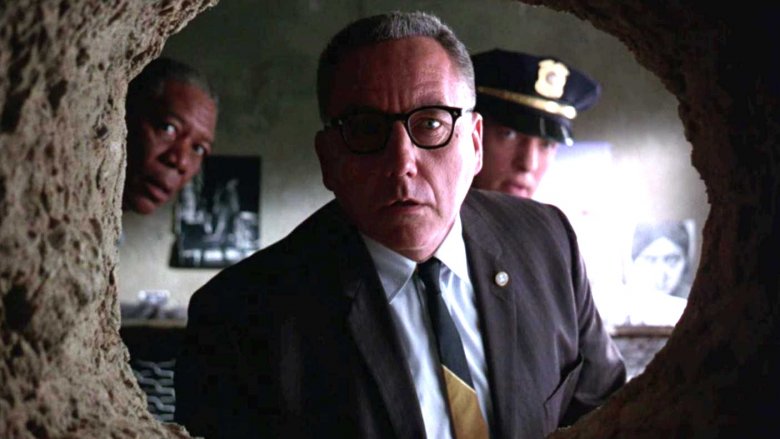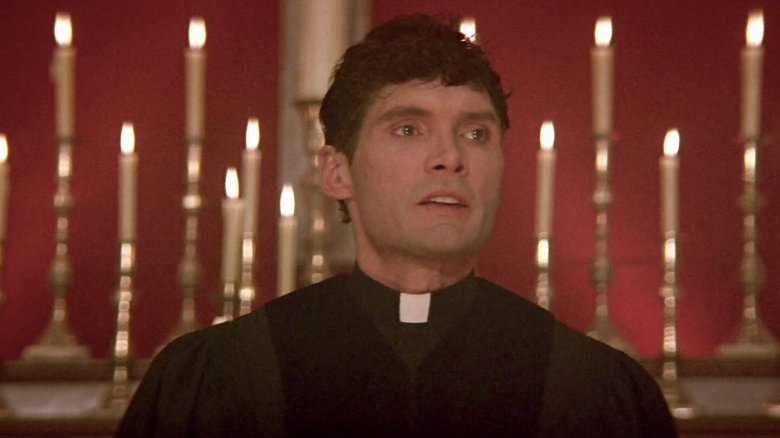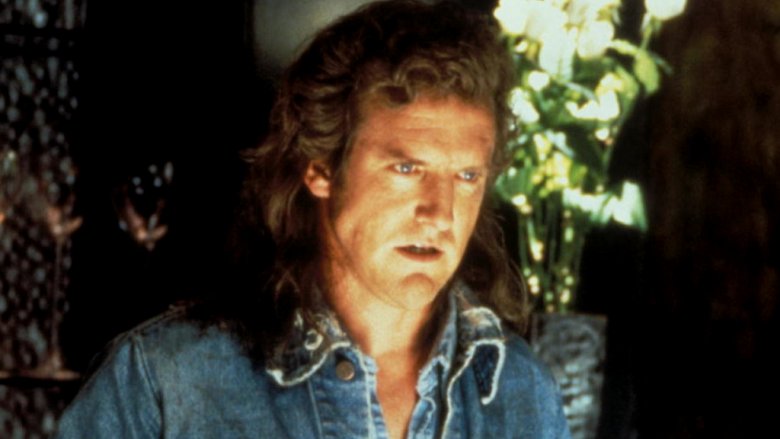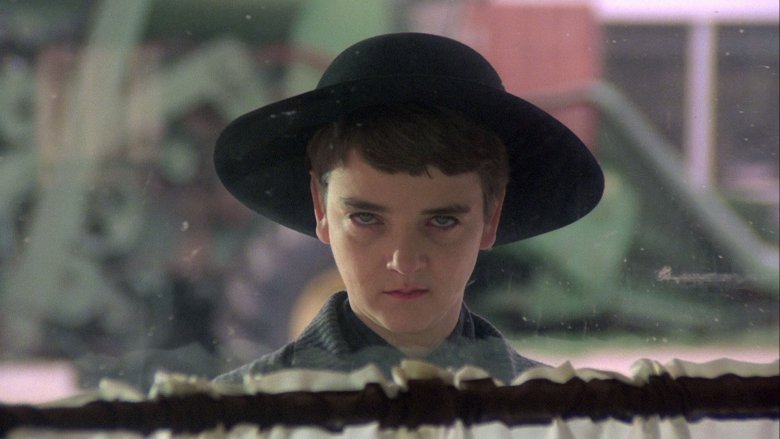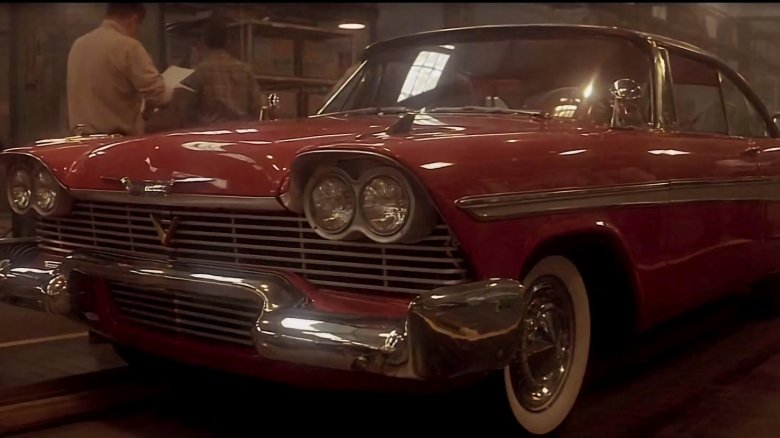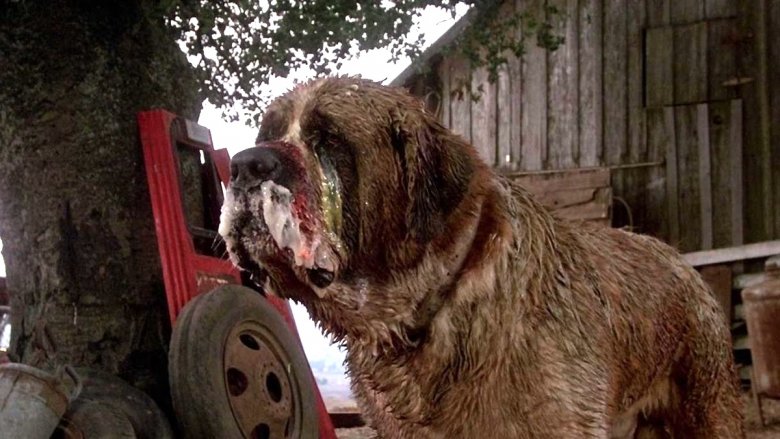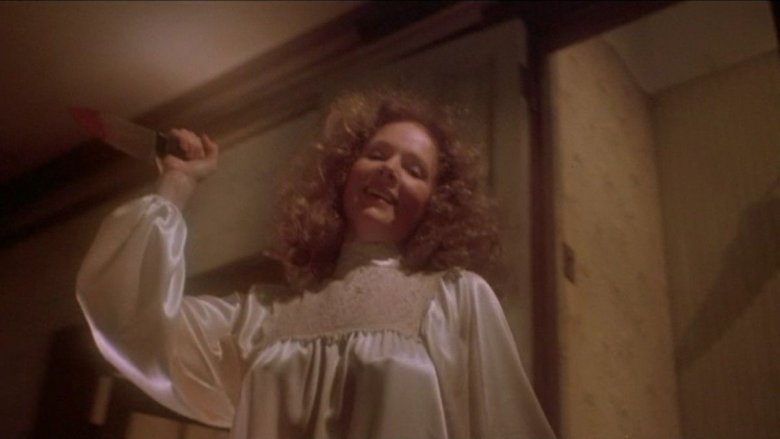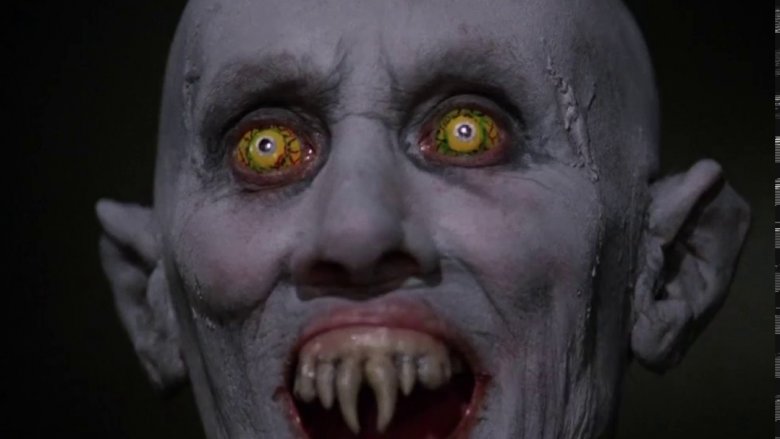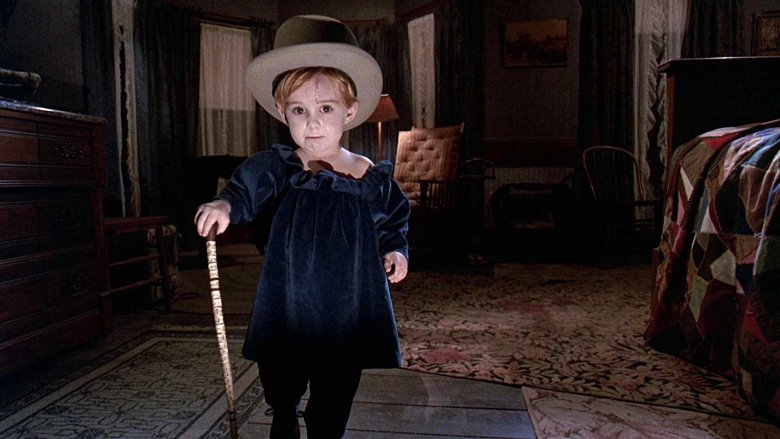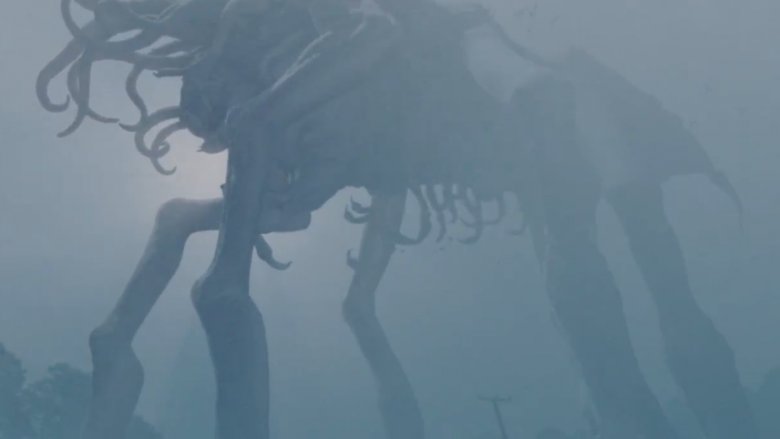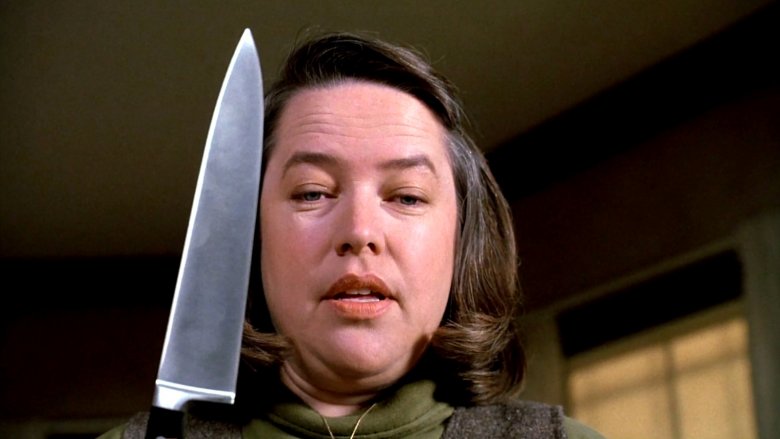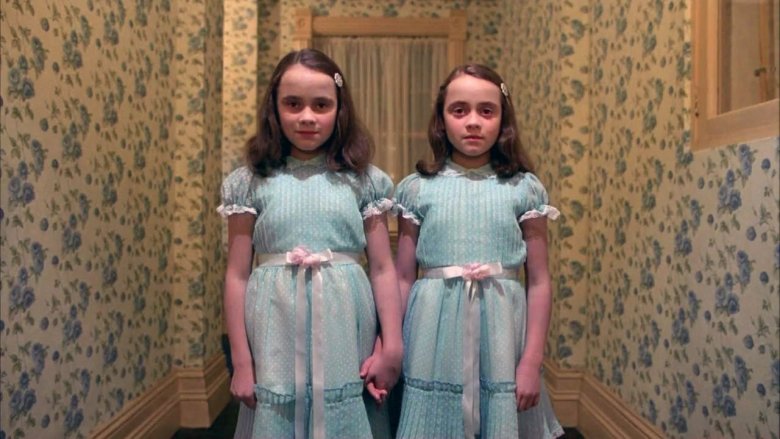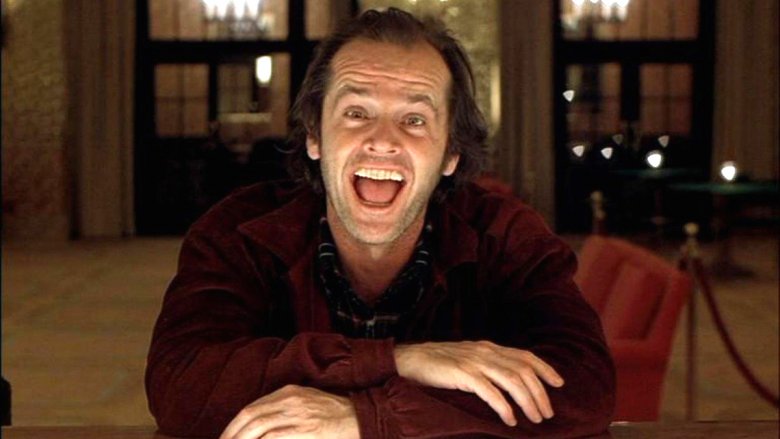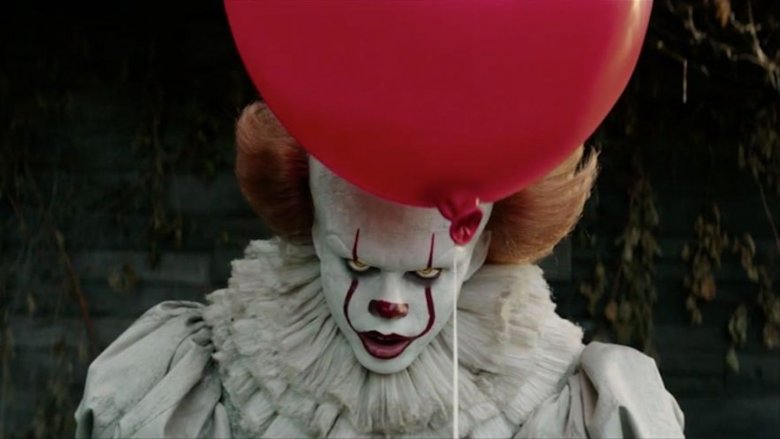Stephen King's Scariest Movie Bad Guys Ranked Worst To Best
For over 40 years, Stephen King has built worlds and monsters meant to terrify. When he started writing, horror was something that was less respected than other genres, but as King told Rolling Stone in 2014, "To a degree, I have elevated the horror genre." Over the course of his career, King has published over 60 novels and dozens of short stories, explored the depths of human pain and suffering, and unleashed a slew of villains upon the literary world, both tangible and mythical.
Carrie hit theaters on November 3, 1976, marking the first of King's works to be adapted for the screen. Some films — like Carrie — have achieved great success, while others — 1993's The Tommyknockers, for instance — have not. Since 1976, we've seen countless King villains, some utterly horrifying and others completely laughable, but there's a handful that have been so terrifying, both in terms of writing and performance, that they've been the source of countless nightmares. These are the Stephen King movie bad guys who've kept us up at night, ranked from worst to best.
Warden Samuel Norton (The Shawshank Redemption)
While The Shawshank Redemption might not be the type of typical horror movie you'd expect to see from Stephen King, it's one of those films that strikes such a deep emotional chord that its characters tend to feel more real — and it's proof that sometimes, the scariest monsters in life are those we come into contact with on a daily basis.
Warden Samuel Norton (Bob Gunton) is a prime example of a man who would use any means necessary to gain power over others. He hides behind the guise of religion, but he runs Shawshank State Prison like a slave owner, manipulating inmates to do as he pleases and punishing those who don't comply. Ultimately, Norton is a coward who chooses to take the easy way out when confronted with his own misdeeds. But cowards can be some of the most frightening people of all.
Gunton told The A.V. Club that playing Norton was the role he was most proud of in his career. "People just respond to [the film] with almost a religious respect," he said. "So to be associated with that movie, particularly in an important role, it's a great, great privilege, and it's a lot of great memories for me."
Reverend Lowe (Silver Bullet)
We can't say for certain that Stephen King has anything in particular against organized religion, but we can say that he's definitely used religion as a backdrop for some of his most horrific villains. That's definitely true of Reverend Lowe (Everett McGill), another of King's religious men turned monsters — in this case, literally.
1985's Silver Bullet tells the story of a small town terrorized by a werewolf and the family who steps up to fight it. The film is indicative of a lot of horror that came out of the 1980s, in that it falls more on the side of cheese than terror (the fact that Gary Busey is in a starring role here certainly doesn't help much in that regard).
Still, werewolves are scary beasts, and the fact that this werewolf is the town's religious leader makes it all the more frightening. Add to that McGill's pre-Twin Peaks creepy portrayal of a guy who's able to hide his brutality behind a white collar, and you've got a werewolf that's maybe not quite as good as David Naughton's in An American Werewolf in London, but comes pretty close.
Randall Flagg (The Stand)
Although much of Stephen King's work has been adapted for the big screen, there are also a number of television adaptations in his filmography. TV miniseries based on King's novels were a big thing at one point — and naturally, some of them were more successful than others, in terms of quality as well as their fear factor.
The Stand adapted King's weighty classic into a four-part miniseries that aired on ABC in 1994, and while its effects are on par with what you might expect to see from a TV miniseries of the era, its portrayal of evil incarnate certainly stands the test of time. Randall Flagg (Jamey Sheridan) is something between demon and human, and he possesses the worst traits of both. His only goal is the destruction of everything that could be considered good, which he sets out to accomplish via black magic and telepathic manipulation. But Flagg is also terrifying on account of how charming he is — there's an evil behind his eyes, but how can you not trust a man with that smile and stellar fashion sense?
Isaac (Children of the Corn)
There isn't much in this world more frightening than an evil child, and 1984's Children of the Corn has an entire town full of them. Some might argue that the scariest villain in the film is actually He Who Walks Behind the Rows — the fertility demon in the cornfields that the kid cult sacrifices the town's adults to appease — but we're inclined to disagree. Demons are absolutely terrifying to a certain degree, but there's just something about a regular human being (and in this case a child) who's able to sway an entire group of people into doing their bidding that's more nightmare-inducing than any supernatural beast.
John Franklin, who was 24 at the time Children of the Corn was filmed (he suffered from a growth hormone deficiency when he was a child), does an incredible job of portraying a corrupt, power-mad adolescent. It's because of him that the film becomes less about the horror of a cornfield demon and more about the danger that lies in charismatic leaders who have ulterior motives.
Christine (Christine)
Is there anything worse than buying a new car only to find out it's pure evil and has the ability to possess anyone who drives it? Okay, in the world of Stephen King, the answer to that question is probably yes, but still. Christine is a special kind of horror, in that the film takes something as mundane as a car and turns into an unstoppable killing machine that quite literally cannot be destroyed.
Christine isn't one of the more widely acclaimed King adaptations, but it's still a pretty good ride. And while it's impossible for an inanimate object to convey any real emotion, director John Carpenter and his star, Keith Gordon, do a fantastic job of making it seem as though Christine has its own personality, however terrifying it may be. Fun fact: the film's famous resurrection scene almost didn't happen onscreen — Carpenter added it after production wrapped because he felt the movie needed more special effects.
Cujo (Cujo)
If there's anything Stephen King has been able to master, it's turning everyday, inconsequential things into absolute nightmares — a car, a friendly neighbor, a dog. 1983's Cujo tells the story of Donna (Dee Wallace) and Tad (Danny Pintauro), a mother and son who are forced into a hot, broken-down car by a rabid St. Bernard. The film turns out to really be less about a killer dog and more about human relationships and childhood trauma, but Cujo acts as a manifestation of all the terrible things happening in this particular family's life.
Honestly, though, there isn't much out there that's scarier than the thought of something or someone you love turning into a bloodthirsty monster, through no fault of its own. Cujo at the beginning of the film is a sweet, curious dog who winds up in the wrong place at the wrong time. The horror of the entire situation is in coming to terms with the loss of a loved one — and that's exactly what Cujo represents. There's a helplessness in seeing a loved one devolve in front of your eyes, and a sense of denial in having to recognize that fundamental, irrevocable change.
Margaret White (Carrie)
Not every mother is a great mother. The movie world in particular seems to have a greater affinity for the Mommie Dearest Joan Crawfords than The Sound of Music Maria von Trapps. But wire hangers aside, not a single bad movie mom comes even close to the horror of Carrie's Margaret White.
Margaret is a religious zealot who feels the overwhelming need to constantly remind her daughter Carrie of what a sinner she is. She locks her in a prayer closet — essentially just a broom closet adorned with candles and religious memorabilia, including the creepiest crucifix you'll ever see. When Carrie gets her first period, Margaret tells her it's because she's had impure thoughts. She's just an all-around warped woman who thinks that having sex is akin to mortal sin and worthy of murdering the resulting child.
Margaret doesn't last forever. Having a telekinetic kid who knows how to throw knives with her mind will do that. But for the time she's around, she's an absolute monster.
Kurt Barlow (Salem's Lot)
Kurt Barlow from Salem's Lot is the quintessential boogeyman. A vampire who spends the majority of the film not actually on film, Barlow preys on the people of Salem's Lot under the cover of darkness. The terror of his presence comes from his ever-growing list of victims and the ensuing fear of being taken and murdered.
When he does appear, however, Barlow takes on the form of a vampire far removed from the glamour of many of those portrayed in film throughout the 1970s. This is no Christopher Lee Dracula, the kind of monster who's oddly magnetic in spite of his blood thirst. Instead, Barlow is closer to Nosferatu's Graf Orlok, a repulsive monster who isn't about to waste his time trying to charm his victims. Barlow has no interest in subtlety, and he certainly isn't worried about keeping a low profile. If he wants to kill you, he will, and he'll do it in the bloodiest way possible.
Gage Creed (1989's Pet Sematary)
Again, kids. Instead of the small town, demon-worshipping type we know and love from Children of the Corn, however, Pet Sematary's Gage Creed is the soulless zombie type who really likes to play with scalpels. He's incredibly small — as a toddler who's been reanimated following a devastating accident involving an 18-wheeler, Gage is able to hide in the most unsuspecting of places. His need to play this deadly version of hide-and-seek isn't just scary — there's an additional level of creepy innocence that makes the whole thing even more unsettling.
Gage is, like Cujo, an embodiment of innocence corrupted. He's a victim of unfortunate circumstance, and his transformation into a tiny monster is the byproduct of of his own father's grief. In that regard, Pet Sematary is also a terribly sad film, about a terribly sad topic. In 2019, director Mary Lambert spoke to Entertainment Weekly about how important it had been for her to portray that "secret power" of sadness. "When we were editing the movie, Stephen [King] was really my ally in keeping it in there," she said, "because it's a really important part of the book."
The Monsters (The Mist)
Creature fears are pretty common. Spiders, bees, and various other insects can be frightening when they're encountered in large numbers. Imagine that, but on a much larger scale — that's what you get with Frank Darabont's 2007 adaptation of Stephen King's The Mist. The bulk of the film takes place in a single location: a store that's been enveloped in a thick, mysterious mist. Few of the people trapped inside dare to venture out. Those who do suffer horrible deaths.
The mist monsters are otherworldly creatures that go mostly unseen throughout the film. When they do appear, it's as a large tentacle or an oversized venomous insect. They're horrific in both their size and their malevolent nature. They also can't be reasoned with. It isn't like going up against a crazed human being, or even one who's been resurrected from the dead in some form or another. These monsters are seemingly unstoppable — the only way to save yourself from a gruesome death is to take matters into your own hands, which in itself is a terrifying and sad experience. "Horrendous irony," as Darabont described it to Yahoo! Entertainment in 2016.
Annie Wilkes (Misery)
For those out there in search of fame and glory, Annie Wilkes represents the type of person who can make you regret ever wishing for it. 1990's Misery tells the story of Paul Sheldon (James Caan), a famous writer who's taken in by a nurse named Annie Wilkes (Kathy Bates) following a severe car accident. Annie nurses Paul back to health, but she holds him hostage and forces him to rewrite his latest book in a way that she deems appropriate. When he tries to escape, she hobbles him with a sledgehammer, all the while assuring him that she's his "biggest fan."
While her actions alone are enough to rank Annie on any list of Stephen King's scariest villains, what really makes her so terrifying is Bates' incredible portrayal of the character. She earned an Oscar for her work in this role, which Total Film called "one of cinema's greatest, friendliest, monsters." Indeed, part of what makes Annie so awful is how much she really does love Paul. When admiration reaches the tipping point into obsession, there's no telling what a person is capable of doing — and Annie does it all.
The Overlook Hotel guests (The Shining)
The 1980 film adaptation of The Shining is a horror masterpiece. Director Stanley Kubrick created a world within the Stanley Hotel that's so terrifying (albeit something of a departure from Stephen King's original novel), critics still consider it an iconic piece of cinema. The story itself — about a man who loses his mind inside of a haunted hotel — might not seem like much on the surface. But that haunted hotel is unlike any other, and it's straight up nightmare fuel.
To start, the Overlook Hotel was built on an Indian burial ground, which any horror fan knows from experience is never a good sign. The ghosts who reside on the property are all deranged in one way or another, and while some might be a little more outwardly homicidal than others (like the Grady twins compared to Roger in the bear costume, for example), there's not a single hotel guest we'd want to spend a significant amount of time with.
Jack Torrance (The Shining)
For all the creepy hotel guests who reside at the Overlook Hotel, not one of them there can physically harm you — they'll drive you toward a slow descent into madness, but their trick is mental manipulation, not brute force.
Jack Torrance (Jack Nicholson) is the unfortunate recipient of said mental torment, and though he starts out as a frustrated husband and father, he quickly becomes a man lost to madness, one who also happens to be proficient with an axe. Like many of Stephen King's characters, Jack is a regular guy who's just looking to provide for his family. He's a little high-strung, and should probably stay away from the bottle, but there's nothing actually wrong with him.
At least not until he takes over as caretaker for the Overlook, and its guests decide that he would be the perfect vessel for murder. As we watch Jack lose his grip on reality, he only becomes more terrifying, moving from unnerving writer to an axe-wielding, door-breaking psychopath. Even when he meets his final demise, there's something awful in his frozen smile — something that lingers far beyond the final frame.
Pennywise (It)
If you were a child of the '90s, there's a good chance you cut your horror teeth on It, the 1990 miniseries starring Tim Curry as the child-eating Pennywise the Dancing Clown. Curry's Pennywise was a villain that made kids afraid to turn off their bedroom lights — not just because clowns are inherently awful, but because this clown, who manifests as your greatest fear, could get to you anywhere you happened to be.
Watching that It now is a little less frightening than it used to be, but Pennywise the character hasn't gotten any easier to handle. Now, there's Bill Skarsgård in the role, and his take on the creature has somehow made clowns even more horrifying. Between the makeup, the teeth, and the laugh, the new Pennywise feels like much more of a monster than the '90s TV version. "It's such an extreme character. Inhumane," Skarsgård told Entertainment Weekly in 2017. "It's beyond even a sociopath because he's not even human. He's not even a clown. I'm playing just one of the beings It creates."
